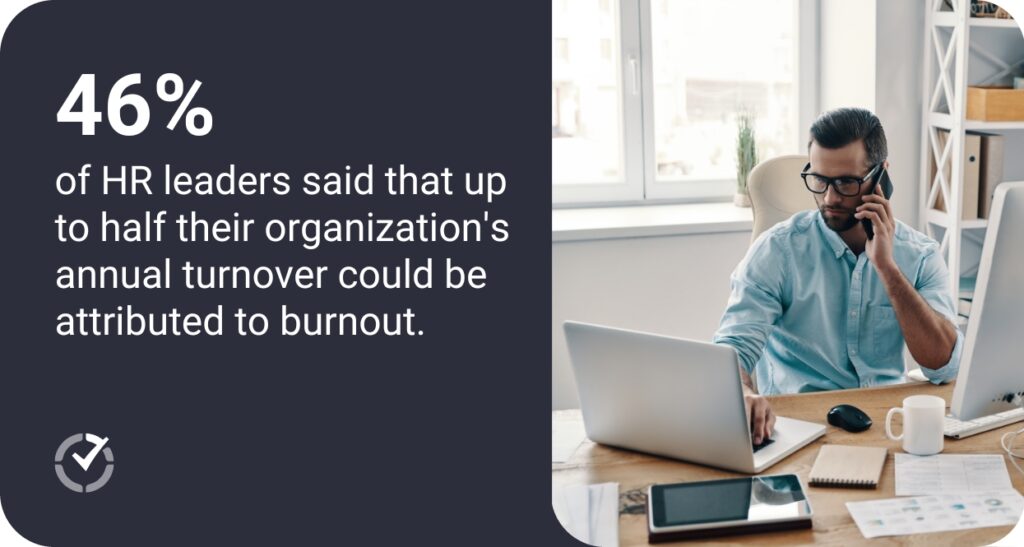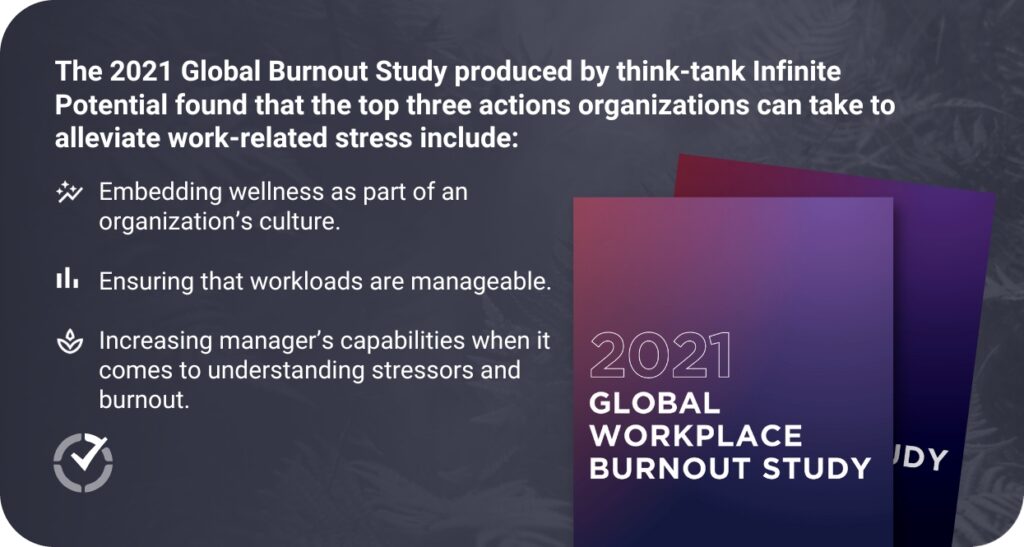Leaders that want to retain top talent long-term need to be able to spot and prevent burnout sooner.
Workplaces that fail to recognise and rectify that its employees are under excessive pressure are more likely to see high levels of turnover, which adds to employers’ recruitment costs and harms organizational culture.
An unabated rise in the adoption of remote work — where employees may feel more isolated or overwhelmed — makes it even more important for organizations to embed approaches that help them take action before burnout becomes an issue.
As a remote-first team, Time Doctor has first-hand insight into how monitoring work-life balance can help reduce stress within your team, improve retention and boost performance.
Balancing output and wellbeing requires more visibility in remote teams
Remote work is the future of business and key to hiring and keeping the best talent. Not only do employees love the flexibility, many employers have achieved productivity gains by switching to a remote or hybrid model.
But productivity can’t come at the expense of people’s emotional and physical wellbeing. It’s an issue that Time Doctor’s own leaders take seriously, because we care about our team and we know that burnout has many negative consequences for a business’ bottom line — such as reduced productivity, increased leave, and turnover.
In 2019, Forbes reported that the majority of HR leaders believed burnout was responsible for sabotaging employee retention — 46% of HR leaders said that up to half of their organization’s annual turnover could be attributed to burnout.

More recently, there’s evidence that burnout is the main reason that people started quitting en masse in the wake of the Covid-19 pandemic, in what’s become known as the Great Resignation.
High performers can be at greater risk, making turnover more costly
Losing highly competent employees is even more costly for employers because the talent market is so tight for in-demand knowledge workers.
In Time Doctor’s case, our software developers play a critical role in the company’s success because they’re directly responsible for developing, maintaining and improving the Time Doctor product that our 200k+ users depend on.
Our own VP of Engineering, Geoff Ainsworth, said that dealing with employee burnout was a consistent issue he’d encountered throughout his career as a technology leader, and that it could be harder to spot when working remotely.
Geoff also said high performers may be more susceptible to burnout. He pointed out that top talent tended to be more diligent and in demand, and therefore, under more pressure. They may also be more likely to be hard on themselves and those feelings can spiral if management doesn’t provide great direction or recognize performance.
Research finds workers plagued by self-doubt and exhaustion
A recent survey of more than 10,000 global employees by Asana found seven in 10 knowledge workers had experienced burnout or imposter syndrome in the last year, with an average of 42% experiencing both.
Discussing this research, cognitive neuroscientist and productivity expert Dr Sahar Yousef argues that a person can objectively be performing well, but can experience psychological distress and reduced wellbeing as a result of their perceptions of their own inadequacy.
Dr Yousef said some of the key ways that organizations could help combat burnout include by setting clear team expectations, reducing distractions, and dedicating time to burnout prevention every day.
That, of course, requires having systems in place that help managers and individuals themselves get a clearer sense of each person’s contributions and results, and identify the signs of overwork and disengagement early.
Sophisticated monitoring tools help retain Time Doctor’s software developers
Time Doctor leaders practice what they preach. By using Time Doctor’s Work-life Balance reporting, Geoff has been able to safeguard the wellbeing of his remote engineering team, without invading their privacy.
The Work-life Balance report enables Geoff to see in real-time which of his software engineers are at risk of burnout and turnover by highlighting those working late, working on weekends, and generally building unhealthy habits. The report feature lets managers customize the indicators used to gauge work-life balance based on a company’s specific schedules and expectations in relation to sustainable workloads.
In Time Doctor’s case, following the red flags and diving into workday analytics for individual employees, gave Geoff the insights needed to have open and constructive conversations with his team about what was inducing stress — and how to fix it.

The result? Improved decision-making around how to resource software development and more nuanced performance reporting, which have both significantly relieved pressure on Time Doctor’s developers and led to improved retention.
Get insights to improve work-life balance before your best people quit
Time Doctor’s own experience shows that taking steps to understand and address organizational issues that lead to burnout does make a tangible difference to your team’s wellbeing, performance and tenure.
The 2021 Global Burnout Study produced by think-tank Infinite Potential found that the top three actions organizations can take to alleviate work-related stress include:
- Embedding wellness as part of an organization’s culture.
- Ensuring that workloads are manageable.
- Increasing manager’s capabilities when it comes to understanding stressors and burnout.

Adopting Time Doctor supports these goals by making activity levels and outputs more measurable and through clever reporting tools like Work-life Balance that uncover potentially overworked and stressed individuals quickly and consistently.
Interested in how Time Doctor can help you cultivate a better work-life balance?

Amy Owens is a product marketing enthusiast with a passion for writing content that communicates the features, values, and benefits of products.


